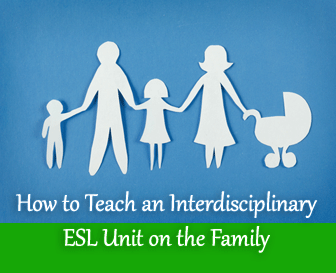Is Anybody Home? How to Teach the Culture of Families


Beginning students study family related vocabulary. Intermediate students may discuss family roles. Advanced students can tackle controversial topics like what should be called a family. No matter what level you teach, the family can find a place in your classroom. Here are some activities you can use as is or modify for your students the next time you study families.
You can test your students’ listening comprehension by playing Family Bingo with your class. Ask each student to bring in a picture of his or her family and to write ten fun facts about them. Then give each person a few minutes in front of the class to share the ten fun facts about the people in the picture and any other information he chooses. You may want your students to take notes as they listen, because they will need to remember the information about each family. You should also take notes and write down various information from each presentation. Then, have your class make their own Bingo boards. Starting with a five by five empty grid, each person should write the names of his classmates randomly in the squares; the center square is free. To play, you will read facts about each person’s family without naming the student whose family they are about. Read the facts in random order. Your students should mark their on their Bingo boards as you read facts about them. The first person with five in a row shouts “Bingo” and you can start another round. Just make sure you check to see if the winner was right in what he or she heard.
For your speaking class, put your students in small discussion groups to share about their families. Working together, students should brainstorm all the members of their families and what roles each of those people plays. In addition, each person should share what role he plays in his family. When thinking about family roles, encourage your students to list what they do well – listen to problems, clean the house, make people laugh, etc. Then have groups discuss each member of the family’s role and compare and contrast it with what they think are the traditional roles for those same members of the family.
Family genealogy has become a popular hobby these days. With resources like ancestry.com, individuals can learn vast amount of information regarding their family. The more family members who submit information to ancestry.com, the easier it is for their relatives to piece together the family puzzle. When the family comes up in reading class, give your students some time to explore ancestry.com. On the site, students can learn how to make a family tree and what types of information help amateurs create a family genealogy. If you like, have your students make and post their own family trees on a designated bulletin board in your classroom. Then give the class some time to look at their classmates’ work and learn about one another’s families.
If you have students who made trips overseas to study English, you know that their community where they study can be like a surrogate family to them. Using a Venn diagram and working in pairs, ask your students to compare and contrast their international community with a typical family and the various relationships one might find there. In what ways are the community and a family the same? In what ways do they differ? Ask each student to write one paragraph discussing the similarities between the international community and a family and a second paragraph discussing the differences between the two. If you like, you may also want your students to write an introduction and a conclusion to complete a block style compare/contrast essay.
As your students think about the people who are important to them, put it to good use as they improve and refine their English skills and let the family out of vocabulary class into all areas of your curriculum.
What are your favorite activities when it comes to teaching about families?